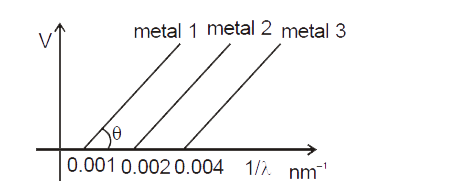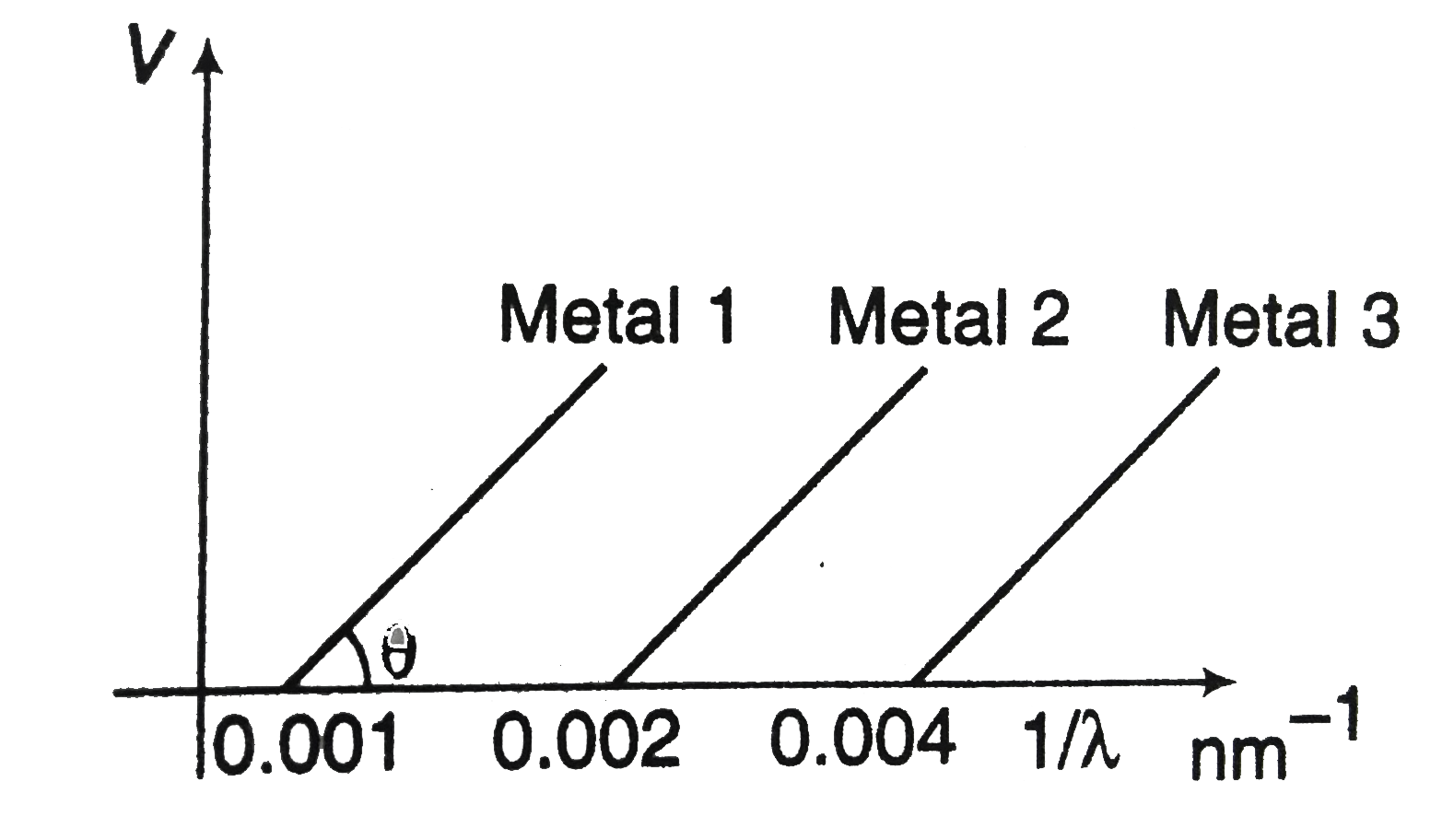Ultraviolet light is incident on two photosenstive materials having work functions and . In which case will the K.E. of the emitted electrons be greater ? Why ?
Max. K.E. of photoelectron, , As , so the max. K.E. of the emitted photoelectrons will be greater for the photosenstive material having work function .
Topper's Solved these Questions
- DUAL NATURE OF RADIATION AND MATTERBOOK - PRADEEPCHAPTER - DUAL NATURE OF RADIATION AND MATTEREXERCISE - NCERT Exerciese question
1 Videos
- DUAL NATURE OF RADIATION AND MATTERBOOK - PRADEEPCHAPTER - DUAL NATURE OF RADIATION AND MATTEREXERCISE - Short answer
1 Videos
- CURRENT ELECTRICITYBOOK - PRADEEPCHAPTER - CURRENT ELECTRICITYEXERCISE - Problems for Practice (B)
2 Videos
- ELECTROMAGNETIC INDUCTION & ALTERNATING CURRENTBOOK - PRADEEPCHAPTER - ELECTROMAGNETIC INDUCTION & ALTERNATING CURRENTEXERCISE - Multiple Choice Questions
1 Videos
Similar Questions
Ultraviolet light is incident on two photosensitive materials having work function W1 and W2(W1>W2). In which case will the kintic enrgy of the emitted electrons be greater? Why?
View SolutionUltraviolet radiation of different frequencies v1andv2 are incident on two photosensitive materials having work functions ϕ1andϕ2(ϕ1>ϕ2) respectively. The kinetic energy of the emitted electrons is same in both the cases. which one of the two radiations will be of higher frequency ?
View Solution
Knowledge Check
A beam of ligth having frequency v is incident on an initially neutral metal or work function ϕ(hv>ϕ). Then
Aall emitted photoelectrons have kinetic energy equal to (hv>ϕ)Ball free electrons in the metal, that absorb photons of energy hv completely, may not be ejected out of the metal.Cafter being emitted out of the metal, the kinetic energy of photoelectrons decreases continuously as long as they are at a finite distance from metal .Dthe emitted photo electrons move with constant speed after escaping from the electric field of metal.A beam of light of wavelength λ is incident on a metal having work function ϕ and placed on a metal having work function ϕ and placed in a magnetic field B. The most energetic electrons emitted perpendicular to the field are bent in circular arcs of radius R. Then
AB=mveR, where hcλ=ϕ+12mv2BB=mReV, where hcλ=ϕ+12mv2CB=mveR, where hcλ+ϕ=12mv2DnoneA metal is heated up to a certain temperature, the work function changes from ϕ1 to ϕ2(ϕ1>ϕ2) photoelectric current before and after change are I1andI2 Keeping all other condition unchanged, the correct relation between I1andI2
AI1>I2BI1=I2CI1<I2DI1≠I2
The graph between 1/λ and stopping potential ( V ) of three metals having work functions ϕ1,ϕ2 and ϕ3 in an experiment of photoelectric effect is plotted as shwon in the figure. Which of the following statement (s) is / are correct ? [Here λ is the wavelength of incident ray ].

View SolutionThe graph between 1/λ and stopping potential (V) of three metals having work- functions Φ1, Φ2 and Φ3 in an experiment of photoelectric effect is plotted as shown in the figure. Which of the following statement(s) is/are correct? (Here, λ is the wavelength of the incident ray). (a) Ratio of work functions ϕ1:ϕ2:ϕ3=1:2:4 (b) Ratio of work functions ϕ1:ϕ2:ϕ3=4:2:1 (c ) tan θ is directly proportional to hc / e, where h is Planck constant and c is the speed of light (d) The violet colour light can eject photoelectrons from metals 2 and 3 .

View Solution(secϕ−tanϕ)2(1+sinϕ)2÷sin2ϕ =?
View SolutionA light of 4eV incident on metal surface of work function ϕeV . Another light of 2.5eV incident on another metal surface of work function ϕ2eV . Find the ratio of maximum velocity of photo electrons (v1v2).
View SolutionIf the work function of a metal is 'ϕ' and the frequency of the incident light is 'v', there is no emission of photoelectron if
View Solution
